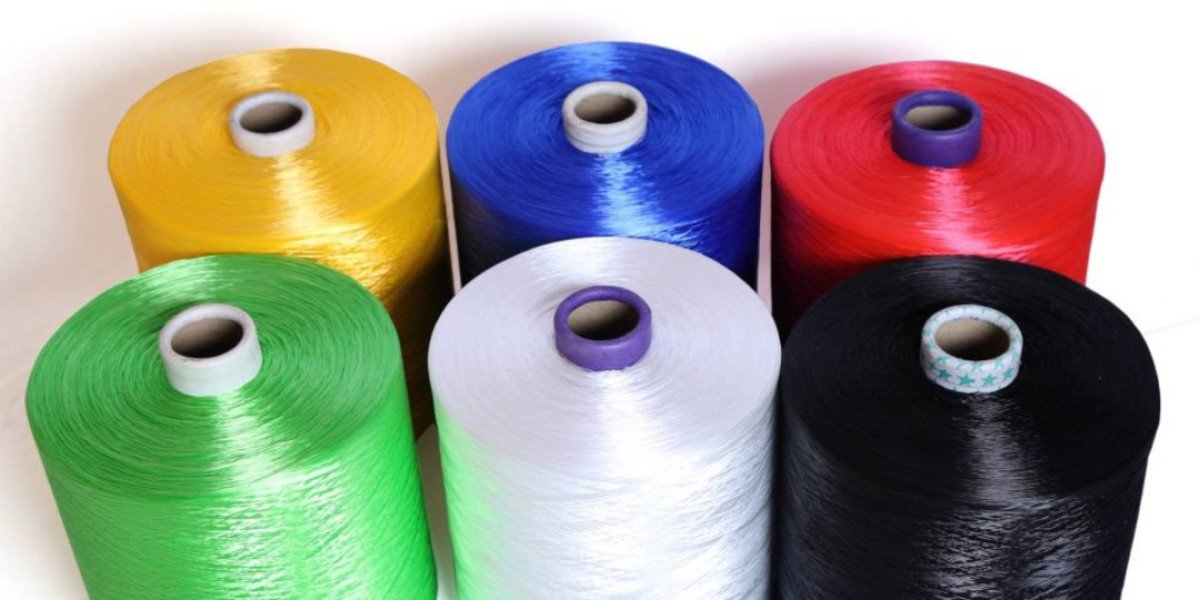Introduction to PP Multifilament Yarn
PP multifilament yarn, a product derived from polypropylene, plays a crucial role in various textile applications due to its unique characteristics and adaptability. This yarn is made up of multiple filaments twisted together, giving it strength, flexibility, and an appealing texture. Its lightweight and durable nature makes it an excellent candidate for a plethora of industrial, commercial, and even domestic uses. It is valued for its resistance to moisture, chemicals, and UV light, making it a preferred choice in areas where these factors can degrade performance in other types of yarn.
In recent years, the demand for PP multifilament yarn has surged, driven by growing industries such as agriculture, packaging, and apparel. This growth has led to the emergence of many specialized manufacturers and suppliers of this versatile product. As the market evolves, the continued development of innovations surrounding Pulkit Plastic Products is paving the way for new applications and improvements in sustainability practices.
Manufacturing Process of PP Multifilament Yarn
The production process of PP multifilament yarn involves several critical steps that enhance its quality and usability. Initially, polypropylene granules are melted and extruded through spinnerets to form continuous filaments. These filaments are then drawn, cooled, and bundled together, creating the multifilament structure. The drawing process elongates the filaments, which increases their tensile strength and ensures uniform diameter for consistent performance.
Once the multifilament has been formed, it undergoes a finishing process, which may include treatments such as twisting, crimping, or coating. Twisting imparts additional strength and texture while crimping provides fullness and bulk, enhancing the yarn's aesthetic appeal. Depending on the intended application, manufacturers may also incorporate various surface treatments to improve color retention or provide additional chemical resistance.
Emerging technologies in the manufacturing process continue to enhance the quality and capability of PP multifilament yarn. Adopting more efficient extrusion techniques, as well as advancements in polymer blends, has led to improved performance specifications, making the yarn suitable for high-performance applications.
Applications of PP Multifilament Yarn
The versatility of PP Multifilament yarn has led to its widespread use across various industries. In the agriculture sector, it is commonly used for making nets, ropes, and fabrics for agricultural applications. For instance, PP multifilament yarn can be woven into shade cloths that protect crops from harsh sunlight while allowing airflow and rainwater to seep through. Its resistance to mildew and decay further ensures longevity and reliability.
In the packaging industry, this type of yarn plays a vital role in the production of woven bags and sacks, which are essential for transporting bulk goods such as grains, chemicals, and construction materials. These woven bags, created from PP multifilament yarn, offer excellent tensile strength and durability, making them a favored choice among PP multifilament yarn manufacturers and suppliers.
PP multifilament yarn is also making waves in the textile and apparel industries. With its lightweight and breathable properties, it is increasingly being used in the manufacturing of various clothing items and outdoor gear. Sports apparel, in particular, benefits from the elasticity and moisture-wicking properties of PP multifilament yarn, providing both comfort and performance.
Benefits of Choosing PP Multifilament Yarn
When selecting yarn for specific applications, the inherent advantages of PP multifilament yarn become apparent. First and foremost, it showcases exceptional strength-to-weight ratios, which means end-products are both lightweight and durable. This is particularly beneficial in applications where weight constraints are critical, such as in transport packaging and outdoor gear.
Another significant advantage is its resistance to various environmental factors. PP multifilament yarn exhibits high resistance to moisture, UV rays, and chemicals, making it suitable for uses in demanding conditions. Whether used in agricultural nets or protective clothing, this yarn’s durability ensures long-lasting performance without deteriorating over time.
From an economic perspective, choosing PP multifilament yarn can be a cost-effective solution. Its lightweight nature often translates to lower shipping costs and easier handling, reducing the overall expenses associated with manufacturing and distribution. Additionally, manufacturers and suppliers who prioritize quality in their production processes benefit from less waste and higher efficiency, further enhancing the economic viability of using PP multifilament yarn.
The Role of PP Multifilament Yarn Manufacturers and Suppliers
As the demand for PP multifilament yarn suppliers continues to rise, the role of manufacturers and suppliers in ensuring product quality and availability becomes increasingly crucial. PP multifilament yarn manufacturers are responsible for adopting advanced technologies and rigorous quality control measures in their production processes. This commitment to quality not only enhances their reputation but also leads to the development of products that meet the specific needs of various industries.
On the supply side, reliable PP multifilament yarn suppliers help ensure that the manufactured goods reach end-users in a timely and efficient manner. These suppliers often establish strong relationships with manufacturers to understand product specifics, enabling them to provide informed recommendations to their customers. In turn, this collaboration enhances the overall supply chain, reducing lead times and improving inventory management for companies looking to incorporate PP multifilament yarn into their operations.
Additionally, as environmental concerns rise, many manufacturers and suppliers are focusing on sustainable practices. This includes exploring eco-friendly production methods, ensuring the recyclability of their products, and providing transparency throughout the supply chain. By adopting sustainable practices, PP multifilament yarn manufacturers and suppliers not only elevate their brand reputation but also contribute positively to global environmental efforts.
Innovations in PP Multifilament Yarn
The landscape of PP multifilament yarn is continually evolving, driven by innovations in materials, processes, and design. For instance, the incorporation of functional additives during yarn production can significantly enhance its properties. These additives can improve flame resistance, antibacterial properties, or UV stability, catering to the demands of specialized applications such as safety gear and outdoor products.
Research and development initiatives are also leading to enhanced techniques in blending PP fibers with other materials, resulting in hybrid yarns with improved performance characteristics. By pairing PP multifilament yarn with materials like aramid, cotton, or recycled plastics, manufacturers can produce textiles that retain the desirable properties of each fiber while addressing niche market demands.
Moreover, technological advancements in weaving and knitting have allowed for the creation of new textile structures that enhance the versatility of PP multifilament yarn. This includes 3D weaving techniques which provide enhanced cushioning properties for applications like mattress covers and protective clothing. As the textile sector continues to prioritize innovation, PP multifilament yarn will increasingly be at the forefront of providing versatile solutions.
Environmental Considerations and Sustainability
While the advantages of PP multifilament yarn are apparent, it is essential to address the environmental impact associated with its production and end-of-life. As public awareness of environmental issues grows, the textile industry is being compelled to adopt practices that minimize waste and reduce ecological footprints. Therefore, numerous PP multifilament yarn manufacturers are exploring recycling initiatives and bio-based alternatives that utilize renewable resources for production.
Understanding the life cycle of PP multifilament yarn can help manufacturers work toward reducing its environmental impact. Efforts to implement closed-loop systems, which facilitate the recycling of old PP yarn products into new materials, are gaining momentum. Such initiatives not only mitigate waste but also contribute to a circular economy, promoting sustainability within the industry.
Furthermore, transparency in sourcing and production is becoming increasingly significant. PP multifilament yarn manufacturers and suppliers that prioritize responsible sourcing of raw materials and ethical manufacturing practices appeal to environmentally conscious consumers. By being proactive in sustainability, companies can differentiate themselves in a competitive market while also safeguarding the planet for future generations.
Conclusion
PP multifilament yarn stands out as a versatile and essential product in the textile industry, driven by its unique properties and wide range of applications. From agriculture to packaging and apparel, its strength, flexibility, and resistance to environmental factors make it a favored choice among manufacturers and end-users alike. As the demand for high-quality and sustainable textile solutions continues to grow, the role of PP multifilament yarn manufacturers and suppliers will be increasingly critical.
With ongoing innovations and heightened awareness of environmental considerations, the future of PP multifilament yarn manufacturer looks promising. Manufacturers who prioritize quality, sustainability, and collaboration with reliable suppliers will pave the way for continuous growth and advancement within this dynamic sector.
Frequently Asked Questions
What is PP multifilament yarn, and what are its primary uses?
PP multifilament yarn is a type of yarn made from multiple strands of polypropylene that are twisted together. It is commonly used in applications such as agricultural nets, packaging materials, and sports apparel due to its strength, flexibility, and resistance to moisture and UV rays.How is PP multifilament yarn manufactured?
The manufacturing process involves melting polypropylene granules, extruding them into continuous filaments, and then drawing and bundling these filaments together. Additional steps, such as twisting and surface treatments, may follow to enhance the yarn's properties and appearance.What are the advantages of using PP multifilament yarn over other types of yarn?
PP multifilament yarn offers a high strength-to-weight ratio, excellent resistance to moisture and chemicals, and cost-effectiveness in handling and transportation. Its versatility allows for diverse applications across multiple industries.What steps are manufacturers taking to ensure environmental sustainability in PP multifilament yarn production?
Manufacturers are exploring eco-friendly production methods, recycling initiatives, and responsible sourcing of raw materials. This commitment to sustainability not only meets consumer demands but also minimizes the environmental impact associated with yarn production.








